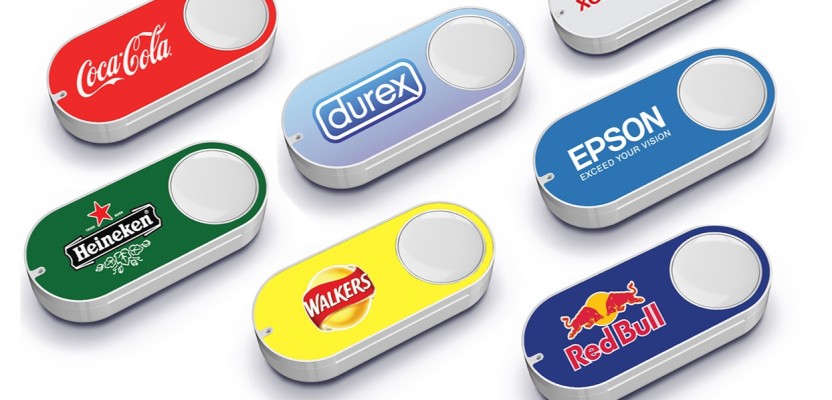Galvanised by convenience and speed, we are ordering more online than ever before. E-commerce is the fastest growing retail channel in Europe and North America; globally it is expected to represent 70% of all sales transactions by 2017. The volume of products and ubiquity of subscription boxes now available is evidence of our demand and voracious consumption. But are big brands responding to this change in behaviour fast enough?

Packaging design is currently focused heavily on shelf impact to drive penetration, but can the established design principles be as effective in the online retail space? Surely not. While the competitive on shelf landscape sees brands all clamouring to sway the wavering hand through distinct brand identities and pack claims, the world’s growing army of armchair shoppers are becoming increasingly accustomed to using the ‘search’ tool to find targeted products.

Consumers who shop through these facilitator sites often miss out on product exposure at shelf and are instead becoming brand blind as they hit the ‘buy again’ button. With the launch of Amazon’s in-home subscription service Dash (above), buttons are merely breeding passivity as you absentmindedly press, press and press again for months on end. When consumers aren’t even browsing products, how can new products and brand re-designs be effective?
If brands are to sell through facilitator sites (like Amazon or mysupermarket.com), pack designs must be simpler to work better in the digital space. When consumers are only viewing a thumbnail of a pack, brands need to elevate and prioritise their reason-to-believe to provide clarity. Claims and icons still count, but only if you’ve already won over a consumer to ‘zoom in’. Unilever is already redesigning its entire portfolio to achieve cleaner visuals online with a clearly consistent pack hierarchy across all SKUs.
The digital space presents the opportunity for brands to create their own independent e-commerce platforms. Much like the trend of challenger pop-ups inspired by a slew of iconic, branded flagship spaces, the success of independent brands launching with online only offers, will force big brands to follow suit.

Online-only brands are doing a brilliant job of taking the intangible digital experience through to tangible brand experiences upon delivery. For example, Birchbox delivers a monthly surprise selection of carefully curated luxury products wrapped up in beautifully designed boxes, adding ‘wow factor’ to the experience. Too attractive to discard, the boxes themselves become keepsakes, making for a lingering emotional attachment between consumer and brand.
We’ve come a long way from the advent of early subscription boxes that began with diet food assortments or straight-from-the-farmer produce. Abel & Cole deliver its hearty and organic dirt-covered vegetables in unfussy brown boxes with a ‘does what it says on the tin’ matter-of-factness that at least reflects the brand’s values and honesty. Diet or clean eating juice packages such as Pure Package or Balance Box have great storytelling online, but then deliver an underwhelming Tupperware with a hand scribbled sticker label. But brands like HelloFresh (above) deliver and present natural perishable produce in a way that elicits a sense of anticipation and thrill. From menu cards to the box itself; it alludes to a premium grocery experience that delights.
This ‘added value’ is being reflected through the cult of ‘unboxing’ – videos on YouTube that show consumers unpacking their products. In fact, unboxing remains a vital part of the mechanics of forging an emotional connection with consumers.
Premium brands are adept at this. They seem aware of the importance of leveraging their ‘unique luxury shopping experience from bricks and mortar into the online space from touch point to touch point. Net-A-Porter is famed for presenting purchases delicately wrapped in tissue paper and encasing them in a magnificent black branded bag tied with silky ribbon. Whether or not you know the contents inside, the sheer indulgence of receiving something so decadently delivered is thrilling.
But what about FMCG brands? Is it feasible to predict that packaging identity will be rendered obsolete the more consumers turn to the convenience of online shopping for their daily goods? Will the role of packaging design in this sense dissipate and die at the hands of digital?
FMCG brands will do well to take a leaf out of premium brands’ books by seeing e-commerce as an opportunity to deliver something to the consumer that cannot be bought in a physical store. Harnessing the thrill of unboxing, power brands could also conceive new ways in which to inject specialness, personalisation and gifting to drive emotional engagement.
Digital has a long way to go before it annihilates the role of packaging, but our increasing inclination to transact online is a sober wake up call for wider shelf-dwelling brands to shake up their brand strategy or languish behind the curve of e-commerce innovation.
- Bella Towse, is a creative planner at Bulletproof






